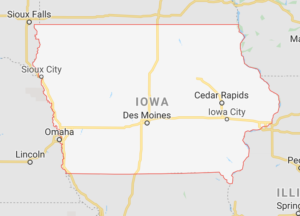Iowa State University has been chosen to lead the development of a new wireless testbed for rural and agricultural applications, as part of the Platforms for Advanced Wireless Research (PAWR) program. The test bed is funded by the U.S. National Science Foundation, a consortium of industry partners, and the U.S. Department of Agriculture’s National Institute of Food and Agriculture (NIFA).
Known as ARA, the wireless living lab for smart and connected rural communities enables the research and development of rural-focused wireless technologies that provide affordable, high-capacity connectivity to rural communities and industries such as agriculture.
The wireless living lab will include the university, the city of Ames (where the university is located), and surrounding farms and rural communities in central Iowa. A wide range of wireless technologies will be featured, as well as an application focus on precision agriculture in both crop and livestock farms.
In addition to $7 million from NSF, the ARA platform has received another $1 million in financial support from the United States Department of Agriculture’s (USDA’s) National Institute of Food and Agriculture (NIFA). The funding will be augmented by in-kind contributions from the PAWR industry consortium to match the federal investment.
“This is a powerful partnership … to foster an important step for improving the quality of life in rural America. Transferring high-speed broadband solutions to rural communities that so badly need them will positively impact businesses, agriculture, healthcare, education, and all aspects of rural life, helping build the local economy,” said USDA’s National Institute of Food and Agriculture Director Carrie Castille.
ARA joins three other PAWR testbeds in Salt Lake City, Utah; West Harlem neighborhood of New York City, and in the Research Triangle area of North Carolina. The PAWR program is designed to enable the exploration of new wireless devices, communication techniques, networks, systems, and services to improve U.S. competitiveness.
The test bed program began in Spring of 2018 when Salt Lake City and New York City were chosen as the first sites. The Salt Lake City project is studying advanced networks including 5G, Radio Access Network (RAN) architectures, network orchestration models and Massive MIMO. The New York City platform is focusing on ultra-high-bandwidth and low-latency wireless communications, with tightly coupled edge computing, a type of cloud computing enabling data processing at the edge of the network.
Begun in 2019, the Research Triangle PAWR platform, based in Raleigh and Cary, NC, is researching wireless communications for unmanned aerial systems (UAS) and ground mobility on a regional scale. The goal is to accelerate the integration of UAS into the national airspace through new advanced wireless capabilities, while leveraging UAS to advance wireless communications.





Reader Interactions